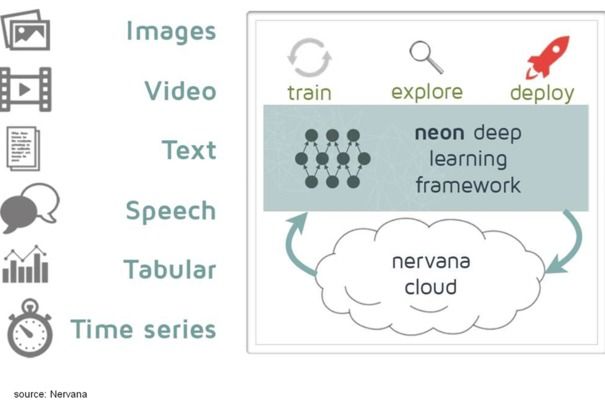Page 11440
May 31, 2016
China’s Quantum Satellite Next Month to Make China Communications Difficult to Crack
Posted by Karen Hurst in categories: quantum physics, satellites, security
As the world is wary about cyber hackers in China, the next big thing for it is launching an experimental quantum communication satellite in July that was designed by the Chinese Academy of Sciences (CAS), making it first of its kind.
Since quantum communications assure the highest level of security being hard to replicate or separate. Nor can it be reverse engineered as it involves a complex process employing quantum entanglement. Once it is successful, China can be sure that no one can crack into its security networks, making it impossible for any world power to snoop around.
Developed over the last five years, the quantum satellite will be launched from the Jiuquan Satellite Launch Center with four ground stations to track and facilitate communication. Moreover, it will have one space quantum teleportation experiment station, said a report prepared by CAS.
May 31, 2016
Startups and Pendulum Swings Through Ideas, Time, Fame, and Money — By a16z | Soundcloud
Posted by Odette Bohr Dienel in categories: augmented reality, bitcoin, business, virtual reality

May 31, 2016
Use of next-generation gene sequencing in NICUs may improve diagnosis of rare diseases
Posted by Karen Hurst in categories: biotech/medical, genetics
The use of next-generation gene sequencing in newborns in neonatal intensive care units (NICUs) may improve the diagnosis of rare diseases and deliver results more quickly to anxious families, according to new research in CMAJ (Canadian Medical Association Journal).
“Next-generation sequencing has the potential to transform the practice of clinical genetics rapidly,” writes Dr. David Dyment, Children’s Hospital of Eastern Ontario (CHEO), with coauthors. “In particular, newborns admitted to the NICU with rare and complex diseases may benefit substantially from a timely molecular diagnosis through next-generation sequencing.”
Children with suspected rare genetic diseases usually undergo a battery of tests to determine a molecular diagnosis. Current practice involves testing of specific genes or a panel of genes, and these tests are often done outside the country because of limited availability within Canada. This means it may be months or even years before a diagnosis is made.
May 31, 2016
Gene Duplication: New Analysis Shows How Extra Copies Split the Work
Posted by Karen Hurst in categories: biotech/medical, evolution
 The human genome contains more than 20,000 protein-coding genes, which carry the instructions for proteins essential to the structure and function of our cells, tissues and organs. Some of these genes are very similar to each other because, as the genomes of humans and other mammals evolve, glitches in DNA replication sometimes result in extra copies of a gene being made. Those duplicates can be passed along to subsequent generations and, on very rare occasions, usually at a much later point in time, acquire additional modifications that may enable them to serve new biological functions. By starting with a protein shape that has already been fine-tuned for one function, evolution can produce a new function more rapidly than starting from scratch.
The human genome contains more than 20,000 protein-coding genes, which carry the instructions for proteins essential to the structure and function of our cells, tissues and organs. Some of these genes are very similar to each other because, as the genomes of humans and other mammals evolve, glitches in DNA replication sometimes result in extra copies of a gene being made. Those duplicates can be passed along to subsequent generations and, on very rare occasions, usually at a much later point in time, acquire additional modifications that may enable them to serve new biological functions. By starting with a protein shape that has already been fine-tuned for one function, evolution can produce a new function more rapidly than starting from scratch.
Pretty cool! But it leads to a question that’s long perplexed evolutionary biologists: Why don’t duplicate genes vanish from the gene pool almost as soon as they appear? After all, instantly doubling the amount of protein produced in an organism is usually a recipe for disaster—just think what might happen to a human baby born with twice as much insulin or clotting factor as normal. At the very least, duplicate genes should be unnecessary and therefore vulnerable to being degraded into functionless pseudogenes as new mutations arise over time.
An NIH-supported team offers a possible answer to this question in a study published in the journal Science. Based on their analysis of duplicate gene pairs in the human and mouse genomes, the researchers suggest that extra genes persist in the genome because of rapid changes in gene activity. Instead of the original gene producing 100 percent of a protein in the body, the gene duo quickly divvies up the job [1]. For instance, the original gene might produce roughly 50 percent and its duplicate the other 50 percent. Most importantly, organisms find the right balance and the duplicate genes can easily survive to be passed along to their offspring, providing fodder for continued evolution.
Continue reading “Gene Duplication: New Analysis Shows How Extra Copies Split the Work” »
May 31, 2016
Cannabis use linked to gene mutation
Posted by Karen Hurst in category: biotech/medical
Pot can cause serious illness due to its gene altering effects.
Scientists from The University of Western Australia have identified how using cannabis can alter a person’s DNA structure, causing mutations which can expose them to serious illnesses, and be passed on to their children and several future generations.
Although the association between cannabis use and severe illnesses such as cancer has previously been documented, how this occurs and the implications for future generations was not previously understood.
May 31, 2016
Augmented Reality Glasses with Eye Tracking Showcased at AWE 2016
Posted by Karen Hurst in category: augmented reality
TELTOW, Germany and REHOVOT, Israel, May 31, 2016 /PRNewswire/ —
- Cross reference: Picture is available at AP Images (http://www.apimages.com)
Continue reading “Augmented Reality Glasses with Eye Tracking Showcased at AWE 2016” »
May 31, 2016
For $20M, These Israeli Hackers Will Spy On Any Phone On The Planet
Posted by Karen Hurst in categories: mobile phones, surveillance
The latest surveillance tech from Israel “will open a new era in data interception,” says the CEO of profitable but troubled snoop supplier Ability. It’s sitting on the “golden key of surveillance” with a $20M product.
May 31, 2016
Fighter jets piloted by mind control using brain-to-machine implant on the horizon
Posted by Karen Hurst in categories: military, neuroscience
DARPA’s new mind control fighter jets (BMIs are coming here soon) — BMI tech will mean smart devices will not be needed by most of the population.
University of Melbourne has developed an implant that could plug the brain directly into a vehicle.
May 31, 2016
The Defense Department Wants Your Ideas For A Military Space Plane
Posted by Karen Hurst in categories: military, space travel
Oh boy.
Got a design concept? You have until July 22 to submit your plan.
By Jennings Brown.















